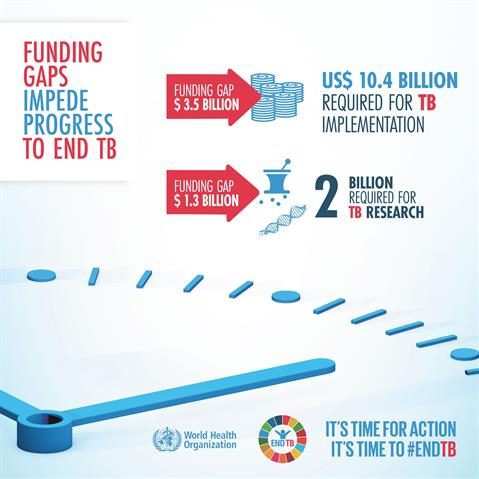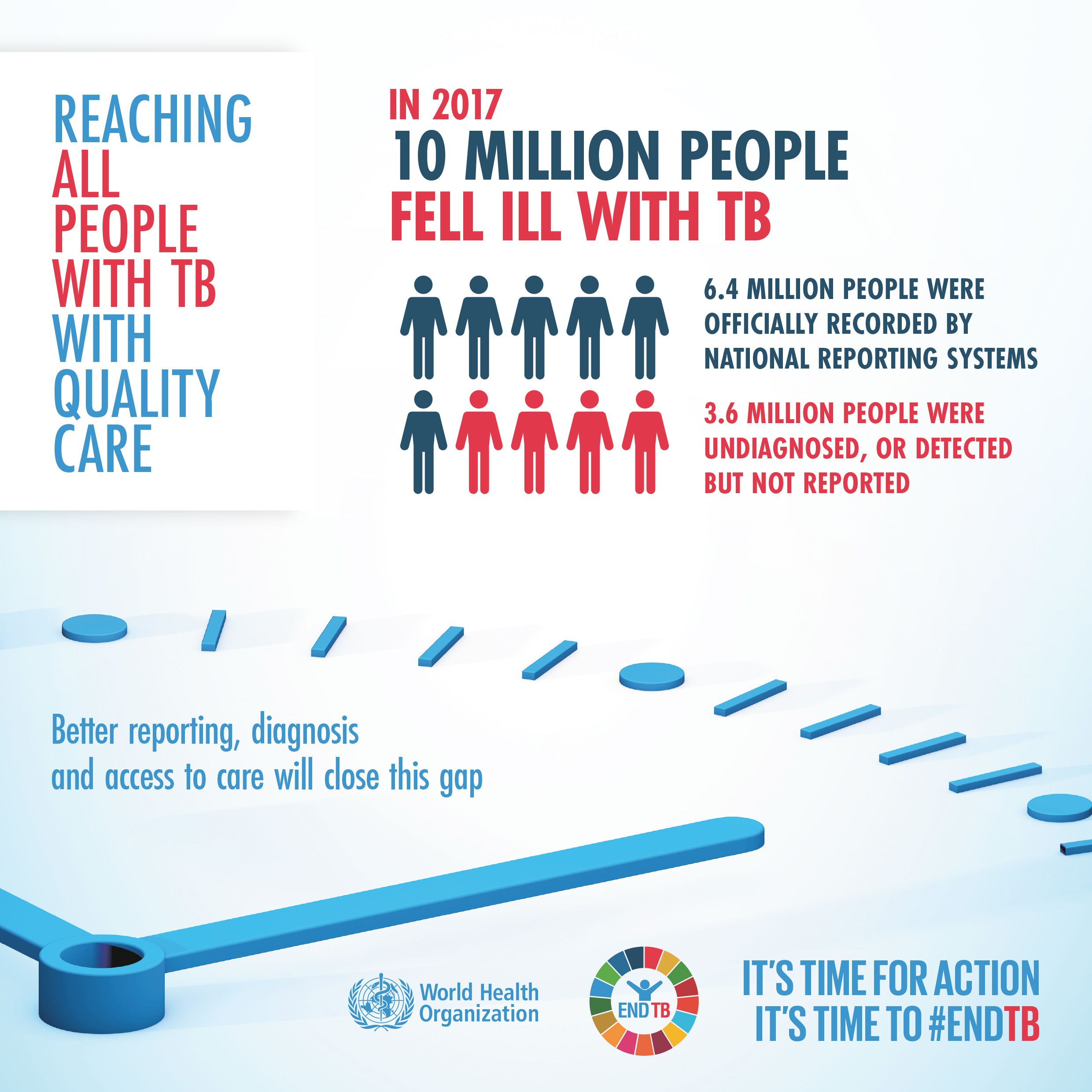
Health
11:10, 24-Mar-2019
A TB-free world may be realized by 2045 with funding
By Pan Zhaoyi

Ahead of the World Tuberculosis (TB) Day on March 22 this year, a report suggesting the world can eradicate tuberculosis by 2045 if actions are properly funded was published in the Lancet.
To those in regions suffering from the disease, this is going to be good news.

Infographic from the WHO
Infographic from the WHO
As one of the Top 10 infectious killers worldwide, TB has infected 10 million and killed 1.6 million people in 2017 alone, including 0.3 million among people with HIV, the World Health Organization (WHO) data shows.
With increased political will and financial resources directed to high-risk groups, as well as effective ways to diagnose, treat and prevent TB, the Lancet report says, a TB-free world is possible.
So far, about 1.7 billion people, or 23 percent of the world's population, are estimated to have a latent TB infection and are thus at risk of developing active TB disease during their lifetime.
But comparatively speaking, TB is not a serious issue in high-income countries. European countries and North American regions only account for 6 percent of the global cases, while areas in India, China, and African countries have 84 percent of the patients, according to the WHO.
To address the global issue, the United Nation held its first high-level meeting on TB in 2018, highlighting the need for immediate action to accelerate progress and the goal of ending the TB epidemic by 2030.

Infographic from the WHO
Infographic from the WHO
Under this initiative, China, a nation ranking second on the high-risk list, has set the target to reduce the TB incidence rate below 58/100,000 and by 20 percent in high burden regions domestically compared with 2015.
Policy makers have also listed TB drugs in the country's basic medical care system, giving subsidies to patients who have to receive treatments in hospital.
In fact, with intensified efforts to reduce the burden and scrutiny of progress from the highest political levels, the TB incidence rate is falling globally at about 2 percent per year.
The absolute number of TB deaths among HIV-negative people has decreased by almost 29 percent over the past 17 years, according to the WHO.
The Lancet report also estimated that financial benefits of reducing TB mortality -- the savings from averting a TB death -- are estimated to be three times the costs, and may be much greater in many countries.
"The theme of this year's World TB Day is: It's time to end TB," said Dr. Tedros Adhanom Ghebreyesus, WHO Director-General. "We're highlighting the urgent need to translate commitments made at the 2018 UN High-Level Meeting on TB into actions that ensure everyone who needs TB care can get it."

SITEMAP
Copyright © 2018 CGTN. Beijing ICP prepared NO.16065310-3
Copyright © 2018 CGTN. Beijing ICP prepared NO.16065310-3